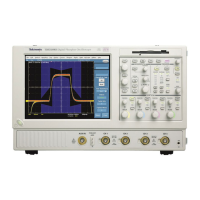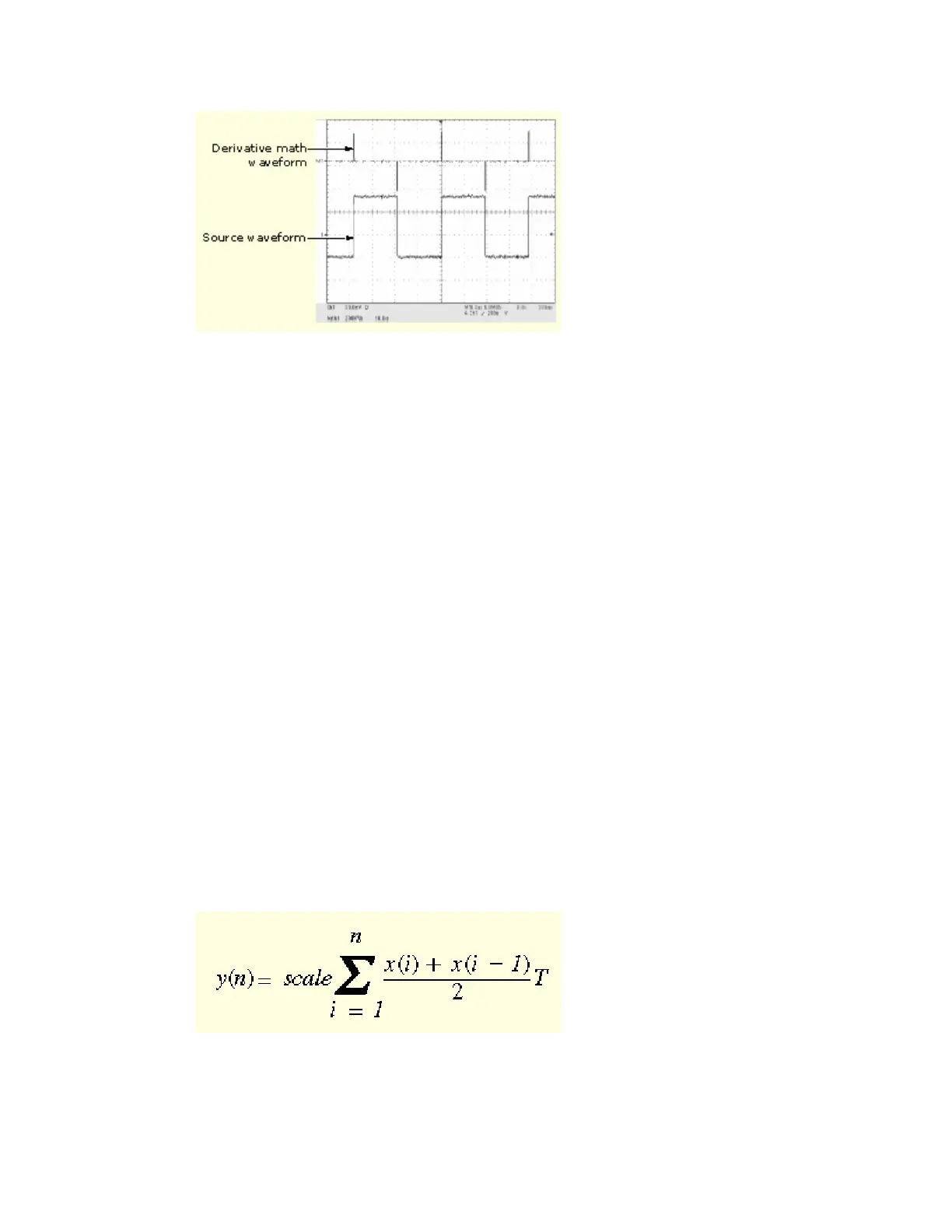266
Cursor Measurements
You can also use cursors to measure derivative waveforms. Use the steps in Taking Cursor
Measurements on page 355. When using that procedure, note that the amplitude measurements on
a derivative waveform will be in volts per second rather than in volt-seconds as is indicated for the
integral waveform measured in the procedure.
Offset, Position, Scale, and Math Waveforms
The settings that you make for offset, scale, and position affect the math waveform you obtain.
Here are some tips for obtaining a good display:
Scale and position the source waveform so that it is contained on the screen. (Off-screen
waveforms may be clipped, resulting in errors in the derivative waveform).
Use vertical position and vertical offset to position your source waveform. The vertical
position and offset will not affect your derivative waveform unless you position the source
waveform off screen so that it is clipped.
Waveform Integration
The math capabilities of the instrument include waveform integration. This allows you to display
an integral math waveform that is an integrated version of the acquired waveform.
Use integral waveforms in the following applications:
Measuring power and energy, such as in switching power supplies.
Characterizing mechanical transducers, as when integrating the output of an accelerometer to
obtain velocity.
The integral math waveform, derived from the sampled waveform, is computed based on the
following equation:
Where: x(i) is the source waveform
y(n) is a point in the integral math waveform

